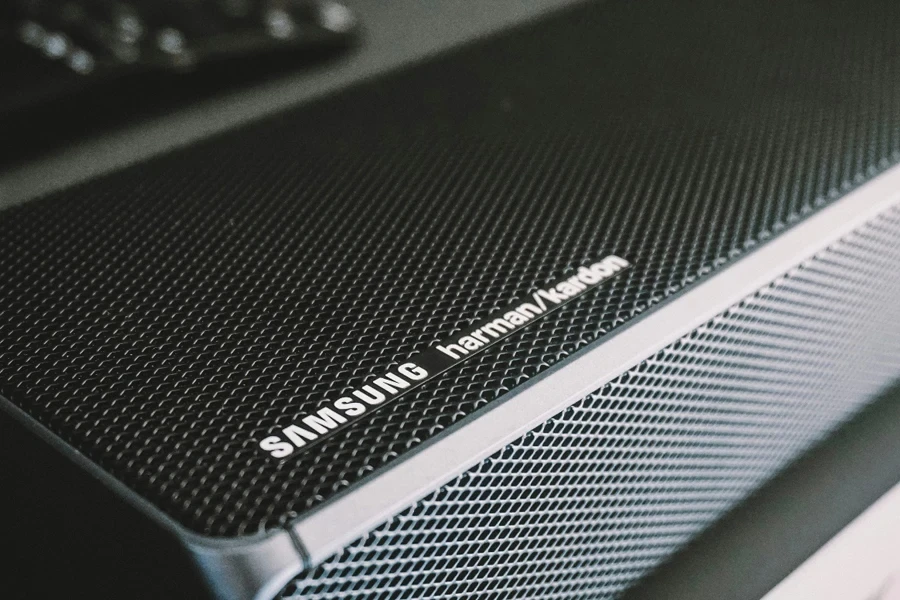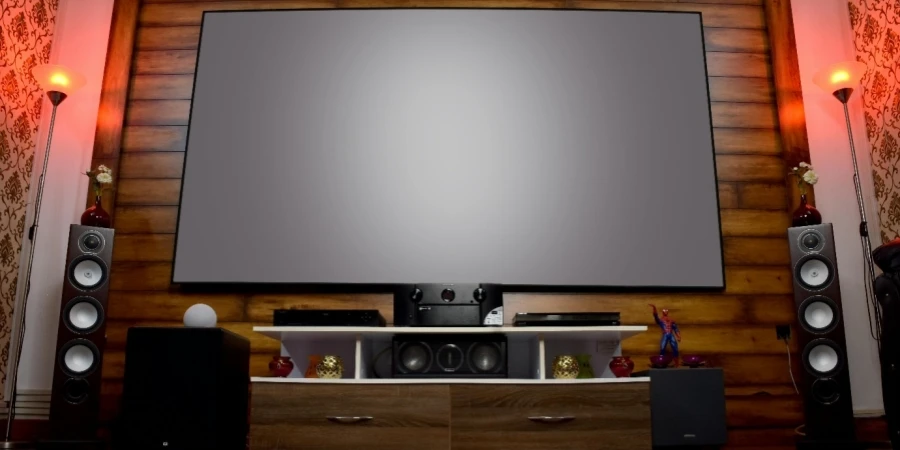The home theater market is witnessing unprecedented growth in 2024, driven by advancements in display and audio technologies that are transforming living rooms into immersive entertainment hubs. As consumer demand for high-quality, cinema-like experiences at home surges, understanding the latest trends and innovations is crucial for professional buyers seeking to make informed purchasing decisions. This article delves into the booming market, highlights cutting-edge technology shaping the future, and reviews top-selling models that are setting industry benchmarks. By staying ahead of these trends, businesses can better cater to the evolving preferences of their customers. The following insights will provide a comprehensive guide to navigating this dynamic market landscape.
Table of Contents
● Exploring the booming home theater market in 2024
● Pioneering technology: Innovations shaping the future of home theaters
● Top models driving the latest market trends
● Conclusion
Exploring the booming home theater market in 2024

Current market scale and growth projections
The home theater market is experiencing rapid expansion, with the market size valued at $11.7 million in 2023. This growth is expected to accelerate, reaching an impressive $61.1 million by 2032, driven by a robust compound annual growth rate (CAGR) of 19.7% during the forecast period, according to Market Research Future. Key factors contributing to this growth include the rising consumer demand for high-quality home entertainment systems and the increasing adoption of advanced technologies like 8K displays and Dolby Atmos audio. As more consumers invest in home entertainment, manufacturers are continuously innovating to meet these demands, further propelling the market’s expansion.
Regional market dynamics
In terms of regional dynamics, North America dominates the global home theater market, accounting for the largest share due to the high demand for advanced audio and video systems, particularly in the United States and Canada. Meanwhile, the Asia-Pacific region is projected to grow at the fastest rate, with countries like China and India leading the charge due to rising middle-class incomes and increasing urbanization. According to Market Research Future, Europe also plays a significant role, particularly in Germany and the UK, where there is strong demand for high-definition audio systems and a growing preference for premium home entertainment solutions.
Consumer trends and spending
Consumer spending on home entertainment systems is at an all-time high, driven by the growing trend of creating cinema-like experiences at home. This trend is fueled by the increasing adoption of smart home devices, which allow for seamless integration of home theater systems into connected ecosystems. According to Ooberpad, technological advancements like wireless ultra-short-throw projectors and smart audio systems with AI-driven sound calibration are key drivers of this shift. As consumers continue to prioritize immersive entertainment experiences, the market is expected to see sustained investment in high-quality, smart home-compatible home theater systems.
Pioneering technology: Innovations shaping the future of home theaters

Revolutionizing sound: Dolby Atmos and AI-driven audio
Dolby Atmos has fundamentally transformed home theater audio by introducing a height dimension to the soundscape, enabling sound to move in a three-dimensional space for a more immersive experience. This is made possible through object-based audio technology, which allows individual sounds, or “audio objects,” to be placed and moved with precision, creating a dynamic audio environment that mirrors real life. Systems equipped with DTS further enhance this capability, supporting up to 32 speaker channels to deliver even more detailed and enveloping soundscapes. AI-driven audio systems are also advancing, using real-time room calibration to analyze room acoustics and automatically adjust audio output for optimal performance. This includes adjusting for factors like furniture placement, room size, and even listener position, ensuring that every seat in the room experiences high-quality sound. Additionally, AI can manage dynamic equalization, automatically enhancing dialogue clarity or boosting specific audio elements depending on the content, whether it’s a quiet conversation or an explosive action sequence.
Wireless advancements and smart integration

The latest developments in wireless speaker technology are eliminating the need for cumbersome cables without compromising audio quality. WiSA (Wireless Speaker and Audio Association) technology, for instance, offers 24-bit/96kHz audio transmission with a latency of just 5.2 milliseconds, ensuring that audio and video remain perfectly synchronized for an immersive experience. These wireless systems are now capable of delivering high-resolution, multi-channel audio that rivals traditional wired setups, making them an increasingly popular choice for modern home theaters. Smart integration is also a key feature, with systems now seamlessly connecting to other smart home devices. For example, HDMI eARC (Enhanced Audio Return Channel) enables the transmission of uncompressed, high-resolution audio between devices, allowing for features like voice control and automated scene settings. Users can now control their entire home theater system, from volume adjustments to input switching, through simple voice commands or smart home apps, enhancing both convenience and the overall user experience.
Sustainable and energy-efficient audio technologies
In response to the growing demand for eco-friendly products, home theater audio systems are increasingly incorporating sustainable and energy-efficient technologies. Modern amplifiers and receivers are being designed with class-D amplification, which is significantly more energy-efficient than traditional class-A/B amplifiers, reducing power consumption while maintaining high audio fidelity. Additionally, low-power standby modes and auto-power down features are becoming standard, cutting energy use during periods of inactivity. Speaker systems are now being constructed with recyclable materials and long-lasting components that reduce the need for frequent replacements, thus minimizing electronic waste. Moreover, some systems include adaptive power management, which dynamically adjusts power usage based on the audio output level, further enhancing energy efficiency without compromising performance. These advancements ensure that home theater audio systems not only deliver superior sound quality but also contribute to a more sustainable future.
Top models driving the latest market trends

Sony HT-A9
The Sony HT-A9 is at the forefront of 2024’s home theater systems, thanks to its 360 Spatial Sound Mapping technology, which uses four speakers equipped with dual microphones to measure and adjust sound waves based on the room’s acoustics. This setup creates up to 12 phantom speakers, delivering an immersive audio experience that covers the entire room. The system supports 8K HDR and 4K 120Hz passthrough, ensuring that it’s future-proof for high-definition content. Each speaker connects wirelessly to a central control unit, reducing the need for excessive wiring and enabling flexible placement within the space. The system’s Hi-Res Audio capability and support for Dolby Atmos and DTS provide a dynamic range and depth that elevate the viewing experience.
LG S95QR
The LG S95QR distinguishes itself with a 9.1.5-channel configuration that includes five up-firing speakers, creating an unparalleled vertical sound field perfect for Dolby Atmos content. The system’s Center Up-Firing speaker enhances dialogue clarity by projecting sound directly upward, making speech crisp and intelligible even in action-packed scenes. The AI Room Calibration Pro technology automatically adjusts the sound output to match the room’s characteristics, utilizing algorithms that consider the shape, size, and furniture within the space. Additionally, the HDMI 2.1 ports allow for seamless 4K 120Hz gaming, making it not just a home theater powerhouse but also a gaming hub.
Sonos Arc
The Sonos Arc continues to dominate the market with its 11 high-performance drivers, including two dedicated upward-firing drivers that deliver Dolby Atmos audio with exceptional clarity and depth. The Arc’s Trueplay tuning technology customizes the sound profile based on room reflections, ensuring that every listener experiences optimal audio quality regardless of their location within the room. The soundbar’s integration with eARC allows for uncompressed audio transmission, ensuring the highest quality sound. The Arc’s ability to sync seamlessly with other Sonos speakers means it can expand into a full 5.1.2 setup, providing a scalable solution for those who want to build a comprehensive audio system over time.
Bose Smart Soundbar 900
The Bose Smart Soundbar 900 is engineered with PhaseGuide technology, which directs multi-directional beams of sound to specific areas of the room, creating an immersive experience that makes it feel as though the audio is coming from places where no physical speakers are present. This soundbar features Custom-Tuned Q Drivers that work in conjunction with QuietPort technology to minimize distortion and provide deep, rich bass without the need for a separate subwoofer. The system also supports Dolby Atmos and can upscale non-Atmos content, delivering a surround sound experience from stereo signals. Additionally, the soundbar’s HDMI eARC connection ensures high-bandwidth audio transmission, making it compatible with the latest high-resolution formats.
JBL Bar 1300X
The JBL Bar 1300X stands out with its True Wireless Surround Speakers, which are detachable and rechargeable, allowing for flexible placement anywhere in the room. These speakers, combined with the Dolby Atmos and DTS support, create a truly enveloping soundstage. The system’s multiBeam™ technology enhances the surround sound experience by bouncing audio off walls to create a wider soundstage, making it feel like the sound is coming from all directions. With 1000W of total power and a 10-inch wireless subwoofer, the Bar 1300X delivers deep, impactful bass that complements its detailed midrange and treble. The soundbar also features 4K Dolby Vision passthrough, ensuring that video quality matches the audio excellence, making it a comprehensive solution for both audio and visual performance.
Conclusion

The home theater market in 2024 is marked by significant advancements in display and audio technology, with top-selling models like the Sony HT-A9, LG S95QR, and Sonos Arc setting new benchmarks for immersive experiences. These innovations, from 8K displays to AI-driven audio systems, are driving the evolution of home entertainment, offering both superior performance and enhanced user convenience. As consumer demand for high-quality, cinema-like experiences at home continues to grow, the industry is poised for further innovation, making home theater systems an essential component of modern living spaces and a promising market for future developments.




